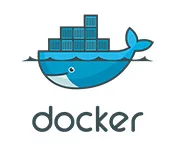Is there a need for docker –link if I am running the 2 containers, that I used to link, in the same POD?
Since all containers inside the same POD are linked together, I am a little confused.
Should I bother with Docker’s –link feature if my two containers are running in the same POD? I thought all containers within a POD are automatically linked, but now I’m not so sure. Can you clarify how Docker handles communication between containers in the same POD, and whether there are any benefits or downsides to using –link in this scenario?

 Question posted in
Question posted in 

2
Answers
Docker’s link feature (
docker run --link, Composelinks:option) has been obsolete since Docker networking was introduced in Docker 1.9.0, in 2015. You never need it in any context.Usually you should redesign your setup so the two containers are in different Deployments (or StatefulSets). It should be unusual to be running two containers in the same Pod, and you should almost never directly create Pods.
In the unlikely event you do have two containers in the same Pod, they can talk to each other as
localhost. This brings the usual restrictions on sharing a network namespace; for example, the two containers can’t both be listening on the same port. This is different from Docker links, where you needed to use the link name as a host name.Kubernetes never supported anything like Docker links, nor has it supported Docker networking features like multiple networks or aliases (though it is possible to have multiple Services that reach the same set of Pods).
Containers within a Pod in Docker (often used with orchestration tools like Kubernetes) have a few advantages for communication compared to standalone containers. Here’s how it works:
Shared Network Namespace:
Pods share the same network namespace. This means all containers see the same IP address and hostname for the Pod.
Containers can reach each other using localhost:. The is the port exposed by the target container within the Pod.
Inter-Process Communication (IPC):
Pods share the same IPC namespace. This allows containers to utilize mechanisms like SystemV semaphores or POSIX shared memory for direct communication.
Benefits of Pod-based Communication:
Simpler configuration: No need to manage separate networks for communicating containers.
Efficient resource utilization: Shared resources like network interfaces reduce overhead.
Downsides of Using –link in Pods:
While –link was a method for linking containers in Docker, it’s generally discouraged within Pods for a few reasons:
Redundancy: Pods inherently provide the necessary network connection. –link adds an extra layer that might not be needed.
Limited Functionality: –link only establishes a one-way connection by setting an environment variable in the linked container.
Security Concerns: –link exposes information about the linked container which might be a security risk.